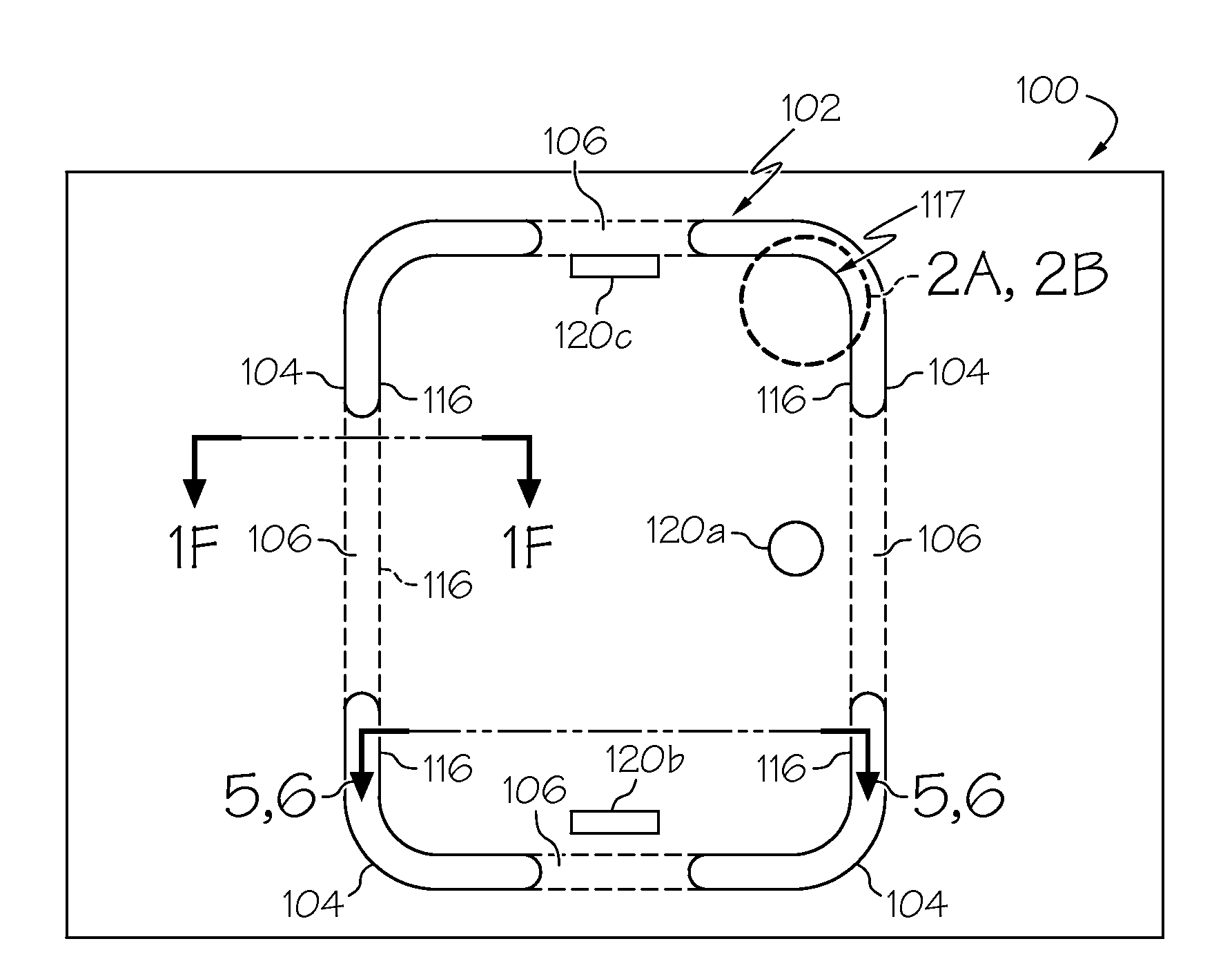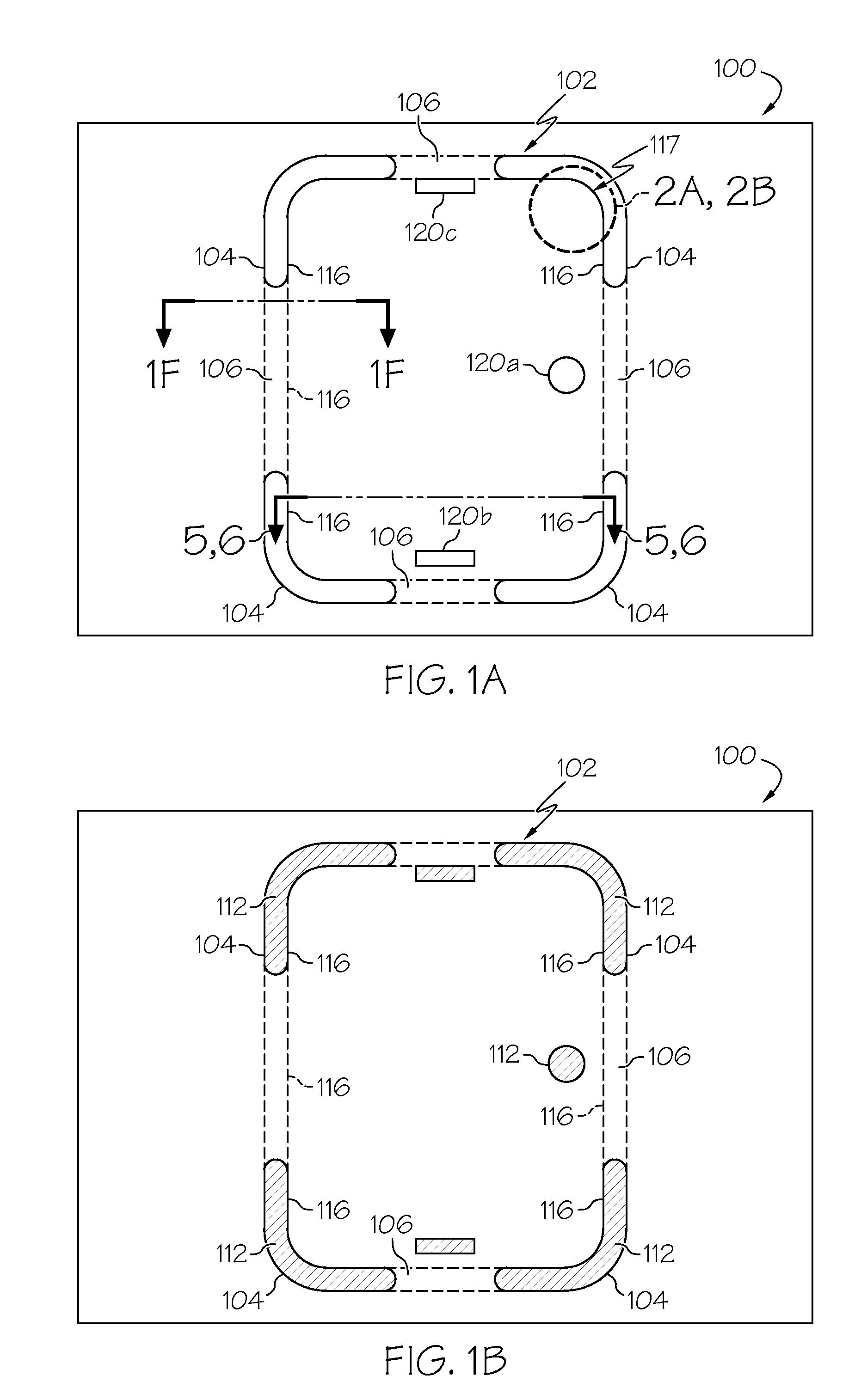Methods for extracting strengthened glass substrates from glass sheets
a technology of glass sheets and reinforced glass, which is applied in glass tempering apparatuses, manufacturing tools, transportation and packaging, etc., can solve the problems of catastrophic failure, increased geometric complexity of glass sheets, and easy damage to strengthened glass sheets,
- Summary
- Abstract
- Description
- Claims
- Application Information
AI Technical Summary
Benefits of technology
Problems solved by technology
Method used
Image
Examples
Embodiment Construction
[0028]Reference will now be made in detail to various embodiments of methods for extracting strengthened glass substrates from glass sheets. FIGS. 1A-1E schematically depict one embodiment of a method for extracting a strengthened glass substrate from a glass sheet. In this embodiment the method generally comprises forming a plurality of channel segments in the glass sheet. The plurality of channel segments may extend through the thickness of the glass sheet and the channel segments are separated from each other by remnant glass webs connecting the glass substrate to the glass sheet. The plurality of channel segments extend around a perimeter of the glass substrate. Thereafter, the glass sheet is strengthened by ion-exchange. The glass substrate is then separated from the glass sheet by severing the glass substrate from the remnant glass webs connecting the glass substrate to the glass sheet. Methods for extracting strengthened glass substrates from glass sheets and glass substrates...
PUM
| Property | Measurement | Unit |
|---|---|---|
| length | aaaaa | aaaaa |
| compressive stress | aaaaa | aaaaa |
| thickness | aaaaa | aaaaa |
Abstract
Description
Claims
Application Information
 Login to View More
Login to View More - R&D
- Intellectual Property
- Life Sciences
- Materials
- Tech Scout
- Unparalleled Data Quality
- Higher Quality Content
- 60% Fewer Hallucinations
Browse by: Latest US Patents, China's latest patents, Technical Efficacy Thesaurus, Application Domain, Technology Topic, Popular Technical Reports.
© 2025 PatSnap. All rights reserved.Legal|Privacy policy|Modern Slavery Act Transparency Statement|Sitemap|About US| Contact US: help@patsnap.com



